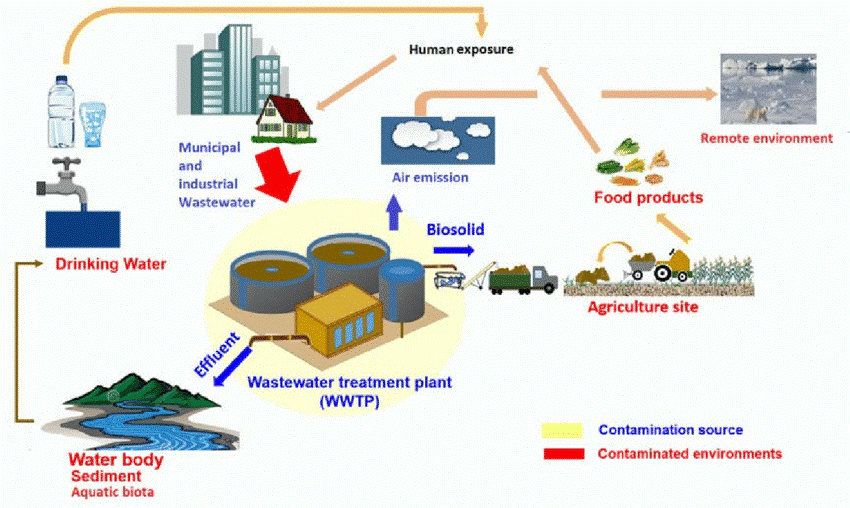Innovative PFAS Therapy Solutions for Safer Water
The increasing frequency of PFAS contamination in water materials necessitates a vital evaluation of ingenious therapy services. Advanced purification technologies and unique chemical treatments existing encouraging avenues for reducing these consistent toxins. Additionally, emerging bioremediation strategies use an even more lasting method to tackling PFAS challenges. As regulative structures continue to adjust, comprehending the efficiency and scalability of these options ends up being vital. What implications do these advancements hold for public wellness and ecological remediation, and how can stakeholders successfully execute them in varied contexts?
Summary of PFAS Contamination
PFAS contamination has become a significant ecological and public health concern. Per- and polyfluoroalkyl materials (PFAS) are a team of synthetic chemicals known for their persistence in the environment and body, leading them to be commonly referred to as "for life chemicals." These compounds have actually been extensively used in different industries, including firefighting foams, water-repellent textiles, and food packaging, mostly because of their water- and grease-resistant residential or commercial properties.
The extensive use PFAS has caused their discovery in dirt, water supplies, and also in the blood of people and animals. Research studies have actually connected PFAS exposure to numerous health and wellness issues, including developing impacts in babies, immune system disorder, and various types of cancer cells. In addition, the environmental determination of these substances complicates their deterioration and removal, raising issues concerning long-lasting eco-friendly influences.
Regulative bodies are increasingly applying rigid standards to monitor and minimize PFAS levels in drinking water and other ecological tools. As recognition of PFAS contamination expands, it has actually come to be imperative for areas and sectors to look for effective therapy options to alleviate direct exposure and safeguard public wellness.
Advanced Purification Technologies
As the seriousness to attend to PFAS contamination escalates, progressed filtering innovations have actually arised as a pivotal part in the remediation initiatives focused on getting rid of these relentless chemicals from water sources. These technologies take advantage of advanced systems to successfully target and record PFAS substances, which are infamously resistant to conventional therapy methods.
One of one of the most encouraging approaches is using granular turned on carbon (GAC), which adsorbs PFAS particles as a result of its high surface and porous framework. This technique has been widely applied in both community and commercial setups, showing substantial decreases in PFAS focus. Furthermore, ion exchange resins have actually acquired grip, particularly created to selectively bind PFAS ions from water, thus promoting their elimination.
Membrane layer filtering technologies, such as reverse osmosis and nanofiltration, likewise show efficiency in PFAS removal by literally separating contaminants from water - pfas management. These systems can achieve high levels of pureness, making them browse around these guys suitable for drinking water applications
Chemical Therapy Innovations
Numerous chemical therapy advancements are being discovered to effectively resolve PFAS contamination in water supplies. One encouraging method involves making use of advanced oxidation processes (AOPs), which make use of effective oxidants such as ozone, hydrogen peroxide, or chlorine dioxide incorporated with UV light to damage down PFAS substances right into less unsafe substances. This approach has actually shown efficiency in research laboratory setups, revealing prospective for scalability in real-world applications.
One more ingenious approach is the development of ion-exchange resins specifically designed to target PFAS. These resins can uniquely adsorb PFAS substances from water, enabling their removal during treatment procedures. Current advancements have enhanced the performance and capacity of these resins, making them a desirable choice for water therapy centers.
In addition, researchers are examining using chemical representatives like persulfate and ferrous ions to improve the destruction of PFAS in polluted water. These agents can induce chemical reactions that facilitate the breakdown of relentless PFAS substances.
Emerging Bioremediation Strategies
Current innovations in chemical treatment innovations have led the method for exploring bioremediation strategies as a practical choice for dealing with PFAS contamination. Bioremediation utilizes the all-natural metabolic procedures of bacteria to break down or change toxins, making it an enticing method for dealing with consistent contaminants like PFAS.
Arising methods in bioremediation include the use of genetically crafted bacteria that can specifically target and damage down PFAS compounds. These microbial pressures are being established for their improved degradation abilities, enhancing the efficiency of the removal procedure. Furthermore, scientists are investigating the potential of plant-assisted bioremediation, where certain plant species might uptake and sequester PFAS from polluted dirt and water.
An additional encouraging technique is the application of bioaugmentation, which involves introducing beneficial microbes into polluted settings to enhance the degradation of PFAS. This approach can promote much faster removal timelines and boost total effectiveness.

Regulative Frameworks and Specifications
An extensive regulatory structure is vital for properly managing PFAS contamination and making sure public wellness security. The raising recognition of per- and polyfluoroalkyl materials (PFAS) as toxic wastes has triggered numerous federal and state agencies to establish requirements that regulate their presence in water products. The U.S. Epa (EPA) has established health and wellness advisories and is pursuing establishing enforceable limitations for PFAS in alcohol consumption water.
State-level laws differ significantly, with some states adopting stricter guidelines than those recommended by the EPA. These regulations usually include maximum impurity degrees (MCLs) for specific PFAS compounds, surveillance requirements, and reporting obligations for water utilities. In addition, emerging frameworks concentrate on the remediation of contaminated websites, emphasizing the demand for efficient treatment innovations.

Verdict
Finally, the development and execution of cutting-edge PFAS therapy solutions are vital for dealing with the pervasive problem of water contamination. Advanced purification innovations, chemical treatments, and arising bioremediation strategies collectively provide a complex technique to properly minimize and weaken PFAS levels. As governing structures remain to advance, incorporating these technologies will certainly be necessary to safeguard public wellness and restore the integrity of infected water resources, eventually contributing to a cleaner and safer environment.